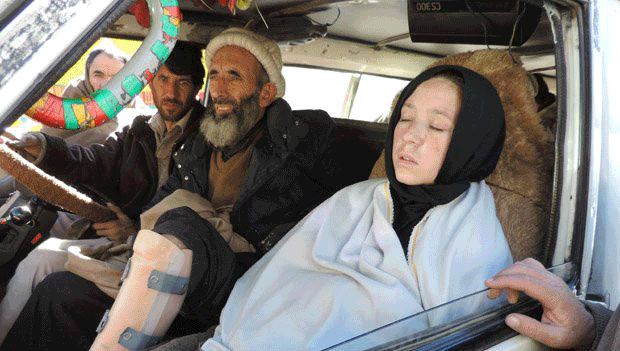|
Pakistan’s river system consists of more than 60 small and large rivers. Indus River, with an overall length of around 3200 KM and total estimated annual flow of 207 billion cubic meters, is Pakistan’s longest and largest river. This is a list of some rivers wholly or partly in Pakistan.
|
Indus River
The Indus River is a major river in Asia which flows through Pakistan. It also has courses through western Tibet and Northern India. Originating in the Tibetan Plateau in the vicinity of Lake Mansarovar, the river runs a course through the Ladakh region of Jammu and Kashmir, towards Gilgit and Baltistan and then flows in a southerly direction along the entire length of Pakistan to merge into the Arabian Sea near the port city of Karachi in Sindh. The total length of the river is 3,180 km (1,980 mi). It is Pakistan's longest river. |
 |
Beas River The Beas River is a river in the northern part of India. The river rises in the Himalayas in central Himachal Pradesh, India, and flows for some 470 km (290 miles) to the Sutlej River in the Indian state of Punjab. Its total length is 470 km (290 miles), and its drainage basin is 20,303 square kilometres (7,839 sq mi) large.The Sutlej continues into Pakistani Punjab and joins the Chenab River at Uch near Bahawalpur to form the Panjnad River; the latter in turn joins the Indus River at Mithankot. The waters of the Beas and Sutlej rivers are allocated to India under the Indus Waters Treaty between India and Pakistan. |
 |
Jhelum River
Jehlam River or Jhelum River is a river that flows in India and Pakistan. It is the largest and most western of the five rivers of Punjab, and passes through Jhelum District. It is a tributary of the Chenab River and has a total length of about 450 miles (725 kilometers). |
 |
Hub River
Hub River is located in Lasbela, Balochistan, Pakistan. Hub river starts from the Pab Range in the south eastern balochistan and continues with the border of Sindh it reaches Hub and then falls into the Arabian Sea. |
 |
Astore River
Astor River is a tributary of the Indus River and one of the rivers draining the Deosai Plateau, running through Astore Valley. The river originates from western slopes of Burzil Pass. Astor river joins Gilgit River at coordinates 34°00′N 74°41′E.
|
 |
Bara River Bara River is a river in Khyber Agency and Khyber Pakhtunkhwa, Pakistan. The Bara River originates in the Tirah Valley of Bara Tehsil, Khyber Agency. It joins the Kabul River Canal which originates from the Warsak Dam, and enters Peshawar. Then it flows in the North-easterly direction to the Nowshera District, eventually joining the Kabul River near Camp Koruna, Akbarpura. Due to its higher elevation, very limited areas flow through gravity into Bara river. |
 |
Tawi River Tawi is a river that flows through the city of Jammu. Tawi river is also considered sacred and holy, as is generally the case with most rivers in India.Tawi river originates from the lapse of Kali Kundi glacier and adjoining area southwest of Bhadarwah in Doda District. Its catchment is delineated by latitude 32°35'-33°5'N and longitude 74°35'-75°45'E. The catchment area of the river up to Indian border (Jammu) is 2168 km² and falls in the districts of Jammu, Udhampur and a small part of Doda. Elevation in the catchment varies between 400 and 4000 m. |
 |
River Jindi The River Jindi, also known as Kot and Manzari Baba, begins in the hills of Malakand Agency, in the northern district of Charsadda, in Khyber-Pakhtunkhwa, Pakistan. During the early months of each year, the River Jindi has a very limited water supply, but the summer months bring with them much needed rain to water the area. As the river proceeds downstream, the local people use dams, similar to the Warsak Dam on the Kabul River, to take out water for irrigation; therefore, the amount of water flowing downstream decreases. |
 |
Rupal River The Rupal River is an east-west glacial stream rising from the meltwater of the Rupal Glacier in northern Pakistan. The stream flows through the Rupal Valley, south of Nanga Parbat, before turning northeast to the village of Tarashing. The Rupal drains into the Astore River, which eventually reaches the Indus near Jaglot. |
 |
Shingo River The Shingo River is a tributary of the Suru River, and flows through the Ladakh region. The Shingo river enters India from Pakistan-administered Kashmir and meets the Dras River, coming from Dras. 5km from Kargil the merged river meets the Suru River and again re-enters Pakistani territory. The Shingo river is clearer than other rivers in Ladakh because it is formed from melting ice. |
 |





